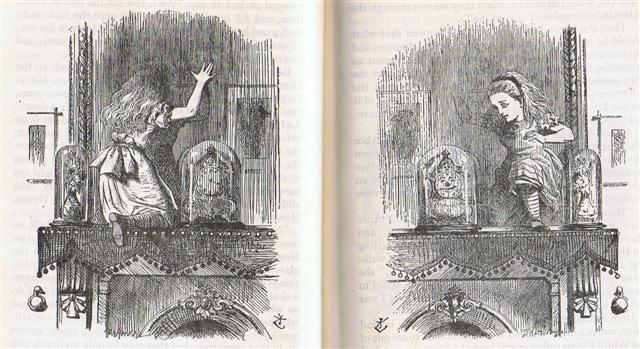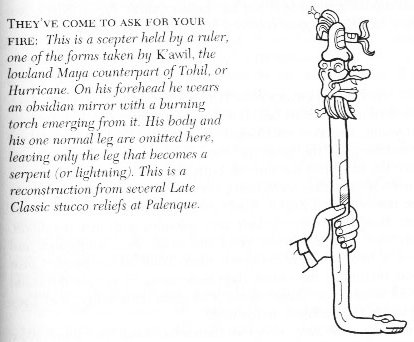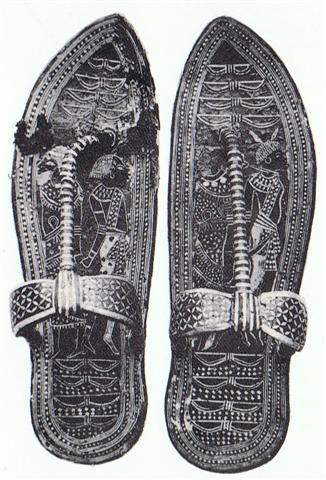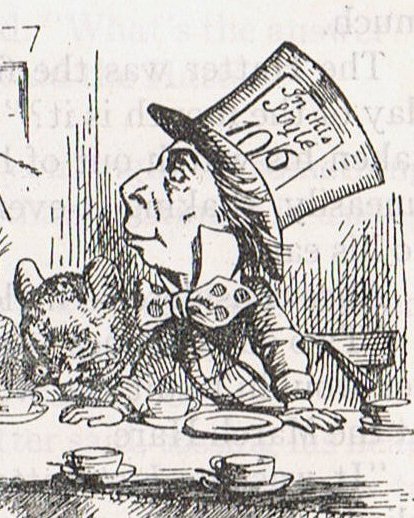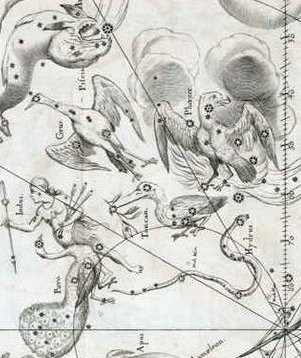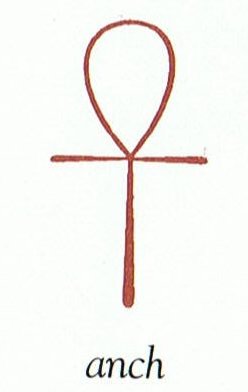Ba8.3 The stars at the Full Moon were giving information about the place of the Sun as if looking in a mirror (the nakshatra system).
At left is the night side, where time is given, and at right is the front side - the side where the face of the Sun is giving life and hiding the stars. The sole of the shoe of Alice in the night tells us hominids she was leaving the night side. ... And then I happened to stumble on a report regarding the behaviour of chimpanzees, viz. how modern science slowly had begun to understand that they communicated not only vocally but also by other signs. For instance, when the mother lifted up her foot so its underside became visible her offspring immediately understood that he should jump onto her back because it was time to move on ...
The fire-place refers to high summer and probably the shoe of Alice indicated June 10, because counting from left to right on the bright balls arranged in a straight line we will find number 10 is hidden by the her shoe. ... Among the Nahyssan of S. Carolina time was measured and a rude chronology arranged by means of strings of leather with knots of various colour, like the Peruvian quipos. The Dakota use a circle as the symbol of time, a smaller one for a year and a larger one for a longer period: the circles are arranged in rows, thus: OOO or O-O-O. The Pima of Arizona make use of a tally. The year-mark is a deep notch across the stick ... ... After that a great downpour began, which cut short the fire of the tribes. And hail fell thickly on all the tribes, and their fires were put out by the hail. Their fires didn't start up again. So then Jaguar Quitze and Jaguar Night asked for their fire again: 'Tohil, we'll be finished off by the cold', they told Tohil. 'Well, do not grive', said Tohil. Then he started a fire. He pivoted inside his sandal ...
... The stick of a spinning top (made from the shell of a sandalwood nut), with which children make the top spin, is in the Rapanui language called ora (= life) ... Ahi. Fire; he-tutu i te ahi to light a fire. Ahiahi = evening; ahiahi-ata, the last moments of light before nightfall. I te ahiahi-ata he garo te raá ki raro ki te vai kava. In the evening the sun disappears under the sea. Ku-tea-á te hetu'u ahiahi, the evening star has risen. Vanaga. 1. Candle, stove, fire (vahi); ahi hakapura, match; ahi hakagaiei, firebrand waved as a night signal. P Mgv.: ahi, fire, flame. Mq.: ahi, fire, match, percussion cap. Ta.: ahi, fire, percussion cap, wick, stove. 2. To be night; agatahi ahi atu, day before yesterday. 3. Pau.: ahi, sandalwood. Ta.: ahi, id. Mq.: auahi, a variety of breadfruit. Sa.: asi, sandalwood. Ha.: ili-ahi, id. Ahiahi, afternoon, night; kai ahiahi, supper. P Pau., Mgv., Mq., Ta.: ahiahi, afternoon, evening. Ahipipi (ahi 1 - pipi 2) a spark, to flash. Churchill. Nau. Sandalwood which used to grow on the steep slopes of the coast: nau opata. Vanaga. The Sandalwood (Santalum) tree. During the birdman ceremonies at Orongo, a piece of sandalwood was tied to the arm with which the victorious birdman held up the egg of the sooty tern. Barthel 2. ... He [Oroi] went into a (grove of ) sandalwood. He had hidden there so he could watch the arrival of the king and (at the moment when) the foot (of the king touched the loop) quickly pull the rope. Then Oroi would come out immediately and kill the king ... Barthel 2.
When the star Acrux could be seen in the night, it was like the mirror image of the star Ankaa:
Surely we can now perceive why the sign for life in ancient Egypt - viz. the Ankh - was designed as a cross with a loop of return (the heel of the sandal) at the top - it was the sign complementary to †, viz. * (the birth entrance in the east).
|
|||||||||||||||||||||||||||||||||||||||||||||||||||||||||||||||||||||||||||||||
